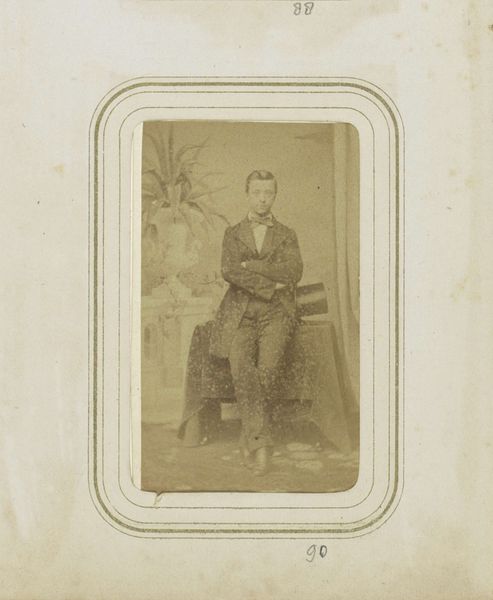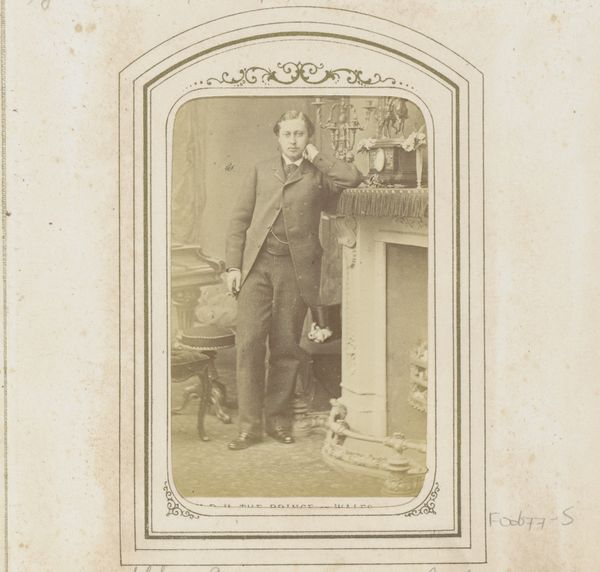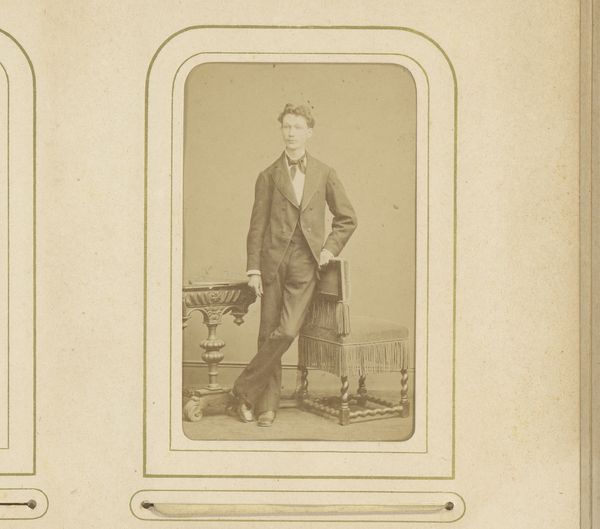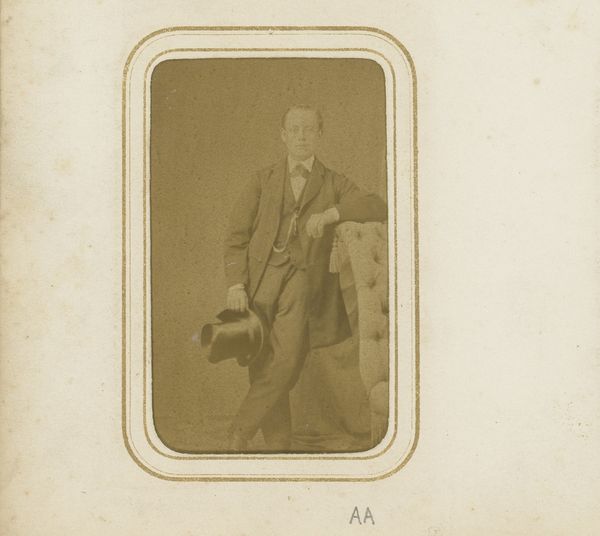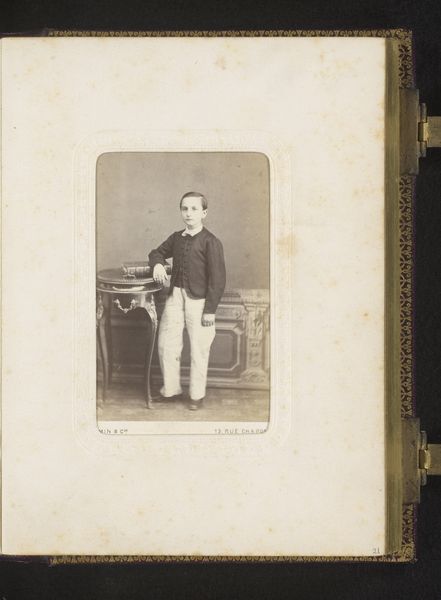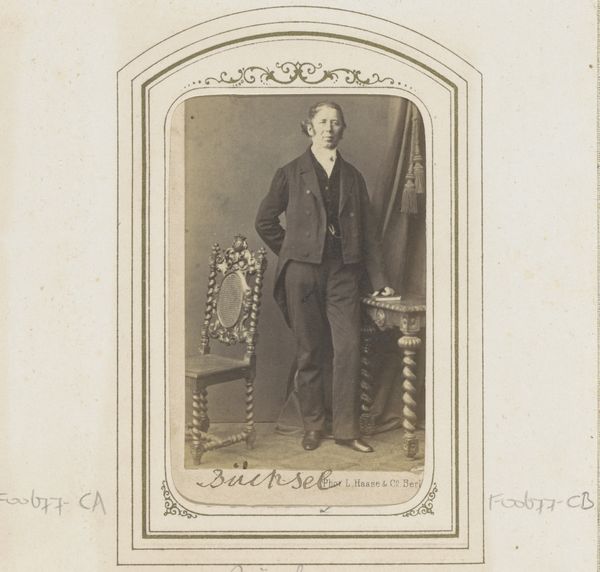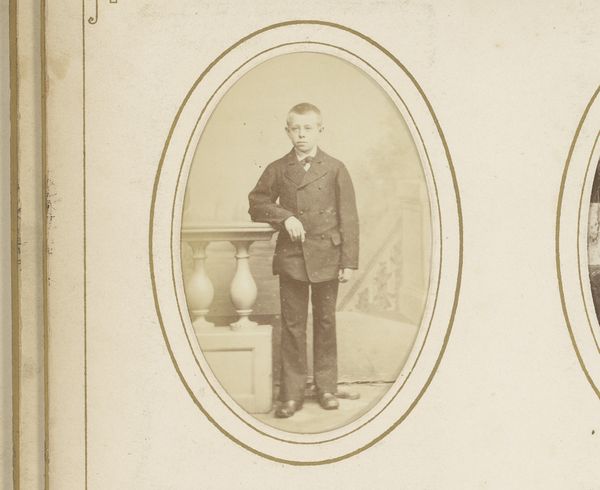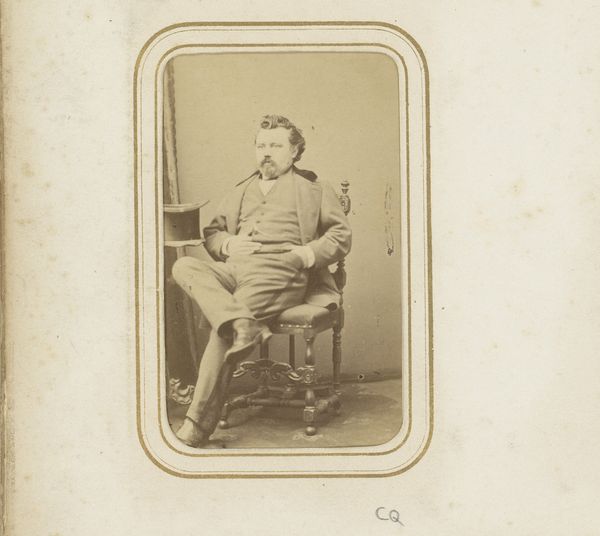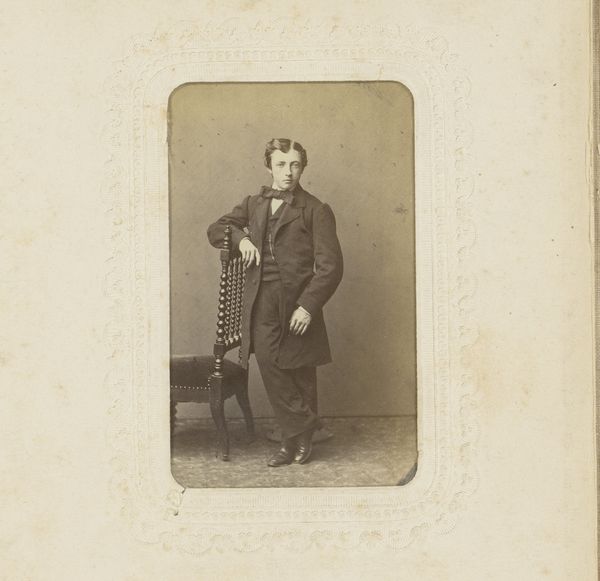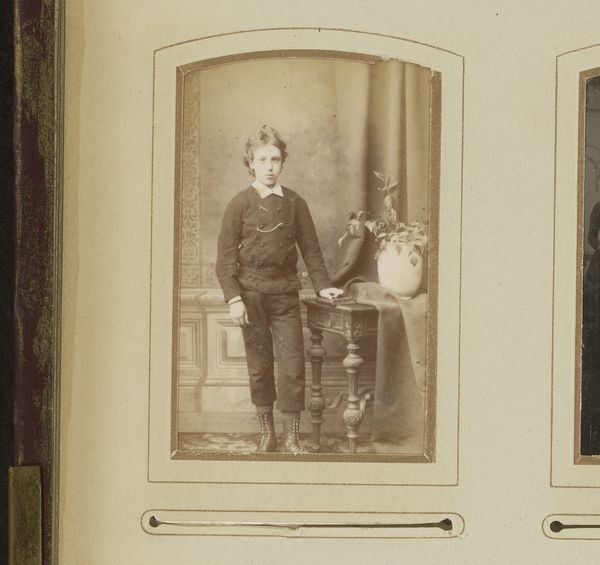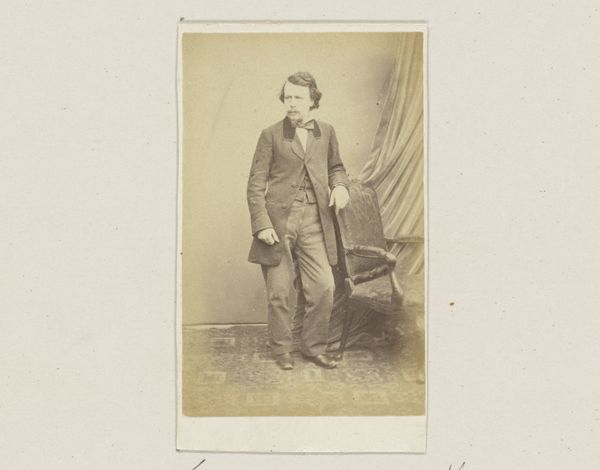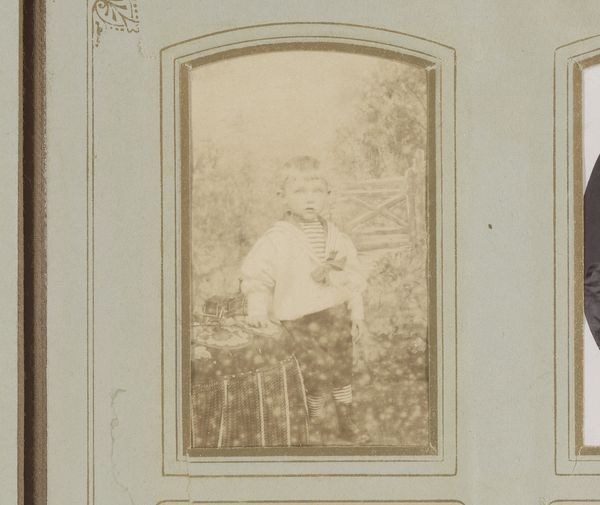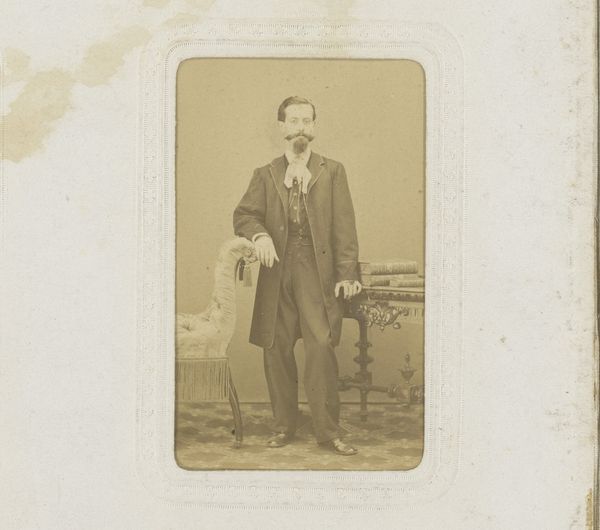
photography, albumen-print
#
portrait
#
photography
#
19th century
#
albumen-print
Dimensions: height 85 mm, width 52 mm
Copyright: Rijks Museum: Open Domain
Editor: This is "Portret van een staande jongen met hoed in de hand," or Portrait of a standing boy with hat in hand, dating somewhere between 1856 and 1876. It’s an albumen print photograph by Ch. Verbeke-Schodts. There’s a certain formality about it that feels quite staged. What's your read on it? Curator: My perspective is immediately drawn to the social context embedded in this photograph. During this period, portrait photography was a significant marker of status and aspiration, particularly for the burgeoning middle class. Look at the boy's attire – the suit, the carefully held hat. These elements weren’t casual choices. They signal an intentional performance of respectability and belonging, don't you think? Editor: I see what you mean. It does seem like they’re trying to convey something beyond just a likeness. Curator: Exactly! And it prompts us to consider the power dynamics at play. Who had access to these technologies and could control their own image? How did gender, class, and race influence who was seen and how they were represented? In what way can this be perceived as a cultural narrative for visibility? Editor: That makes me wonder about the photographer, Ch. Verbeke-Schodts, too. What was their role in constructing this image and perhaps perpetuating certain societal expectations? Curator: Precisely! We should consider this in the broader scope of nineteenth-century image making. How do images dictate gender, race, and class norms in today’s society? This is especially interesting when studying themes like otherness or cultural stereotypes. The photographic portrait reveals the very active role it played within cultural norms. Editor: That’s fascinating! I never really considered how much a simple portrait could tell us about society. Curator: Exactly. It encourages critical thought that unveils complexities often missed at first glance, revealing deeper cultural undertones within something as simple as an antique photograph.
Comments
No comments
Be the first to comment and join the conversation on the ultimate creative platform.
